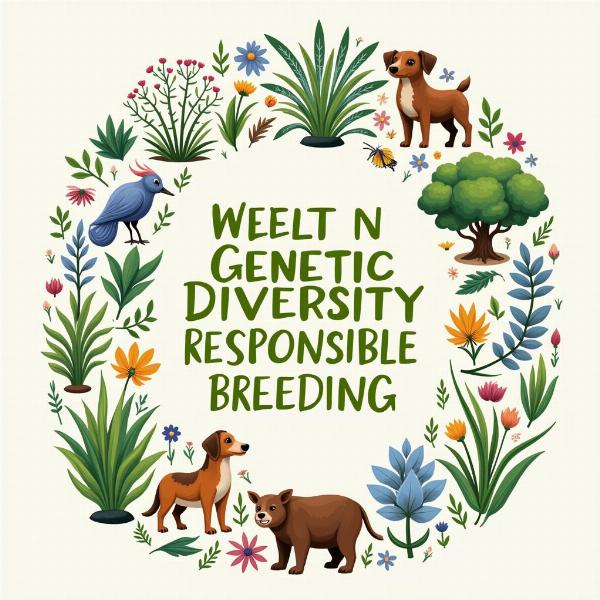Understanding the concept of “interbreed” is crucial in various fields, from biology to animal husbandry. This article will explore the meaning of “interbreed” in Hindi, its implications, and its usage in different contexts. We’ll delve into the cultural and linguistic nuances associated with this term, providing a comprehensive understanding for our Indian audience.
Understanding “Interbreed”
“Interbreed” refers to the act of breeding or crossing different breeds or species. In Hindi, this concept can be expressed through several terms depending on the specific context. Common translations include संकरण (sankaran), प्रजनन करना (prajanan karna – to breed), or मिश्रित नस्ल (mishrit nasl – mixed breed). The most appropriate term will depend on whether you’re discussing plants, animals, or even abstract concepts like cultural exchange. For instance, when discussing the interbreeding of different dog breeds, संकरण (sankaran) is often used. However, when talking about cross-pollination in plants, पर-परागण (par-paragan) is more appropriate.
Interbreeding in Agriculture
Interbreeding plays a significant role in agriculture, where it’s used to develop new varieties of crops with desirable traits like higher yield, disease resistance, and improved nutritional value. Farmers have been practicing selective breeding for centuries, essentially interbreeding plants to achieve specific characteristics. This process is crucial for food security and adapting to changing environmental conditions.
Interbreeding in Animal Husbandry
Similar principles apply to animal husbandry. Interbreeding different breeds of livestock can lead to improved meat production, milk yield, or even create animals better suited to specific climates. However, it’s important to consider the ethical implications and potential risks associated with interbreeding, especially when it comes to animal welfare.
The Cultural Context of Interbreeding
In India, the concept of interbreeding is deeply intertwined with cultural and religious beliefs. The caste system, for example, historically discouraged intermarriage between different castes. Even in animal husbandry, traditional practices often favor preserving the purity of specific breeds, especially those considered sacred. However, modern scientific advancements and changing socio-cultural norms are gradually influencing these perspectives.
The Importance of Careful Interbreeding
While interbreeding can offer significant benefits, it’s essential to approach it with caution. Uncontrolled or poorly planned interbreeding can lead to genetic defects, reduced fertility, and other undesirable consequences. Careful selection of parent breeds and a thorough understanding of genetics are crucial for successful and ethical interbreeding.
 Genetic Diversity
Genetic Diversity
Conclusion
“Interbreed meaning in hindi” encompasses a wide range of interpretations, from scientific applications in agriculture and animal husbandry to cultural and religious considerations. Understanding the appropriate Hindi terms and the context in which they are used is essential for effective communication and avoiding misunderstandings. Whether discussing the development of new crop varieties or the implications of crossbreeding in animals, a nuanced understanding of “interbreed” is crucial for navigating these complex discussions.
FAQ
- What is the most common Hindi word for “interbreed”? संकरण (sankaran) is often used, but other terms like प्रजनन करना (prajanan karna) and मिश्रित नस्ल (mishrit nasl) might be more suitable depending on the context.
- Is interbreeding always beneficial? While it can be used to enhance desirable traits, uncontrolled interbreeding can lead to genetic problems and reduced fitness.
- What are the cultural implications of interbreeding in India? Historical and religious beliefs, such as the caste system, have influenced perspectives on interbreeding, particularly in marriage and animal husbandry.
- How is interbreeding used in agriculture? Farmers use selective breeding, a form of interbreeding, to develop new crop varieties with improved characteristics like higher yield and disease resistance.
- What are the ethical considerations of interbreeding animals? Animal welfare should be a primary concern, ensuring that interbreeding practices do not lead to negative health outcomes or compromise the well-being of the animals.
- What is the difference between संकरण (sankaran) and पर-परागण (par-paragan)? While both relate to interbreeding, संकरण is more general, while पर-परागण specifically refers to cross-pollination in plants.
- Where can I find more information on interbreeding in specific contexts? You can explore resources on agricultural practices, animal husbandry, and genetic research for more detailed information.
Meaning-Hindi.in is your trusted partner for professional Hindi translation services. We specialize in various translation domains, from business and legal documents to technical manuals and website localization. Our team of expert linguists ensures accurate and culturally sensitive translations, catering to diverse industries and client needs. Contact us today for your Hindi translation needs at email: [email protected] or phone: +91 11-4502-7584. Meaning-Hindi.in is committed to providing high-quality language solutions that bridge communication gaps and empower your global reach.